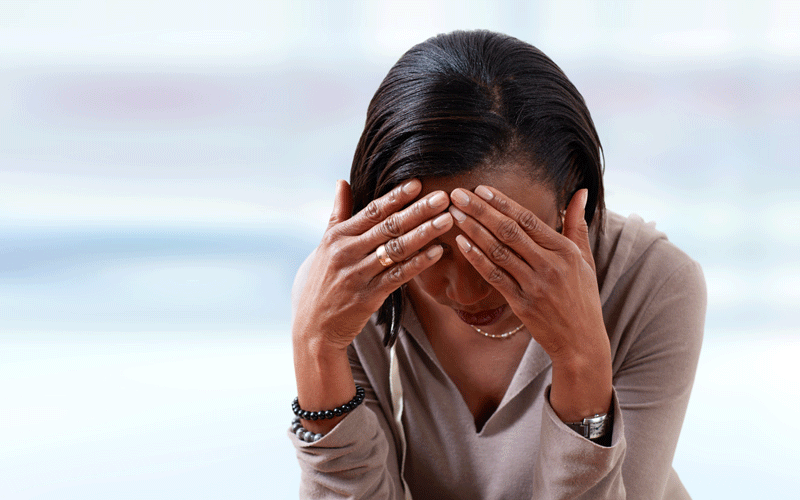Ten types of mental health illnesses
By Ann Wairimu, September 10, 2020Psychiatric disorders are a major risk factor for suicide. World Health Organisation estimates that 90 per cent of all suicide victims have some kind of mental health condition—often depression. Many people can manage these disorders with medication, counselling or both. As we mark World Suicide Prevention Day today, Ann Wairimu outlines some of these disorders.
1. Depression
Depression is a common illness worldwide, affecting more than 264 million people. It is a mood disorder characterised by lowering of mood, loss of interest and enjoyment, and reduced energy.
This can be a result of a chemical imbalance and can lead to the person not understanding the options available to help them relieve their suffering.
Many people who suffer from depression report feeling as though they have lost the ability to imagine a happy future, or remember a happy past.
Emotions and even physical pain can become unbearable. At its worst, depression can lead to suicide.
If you feel depressed, make an appointment to see your doctor or mental health professional as soon as you can.
2. Post-traumatic stress disorder
Post-traumatic stress disorder (PTSD) is a mental health condition that can develop as a response to people who have experienced any traumatic event.
This can be a child sexual or physical abuse, war-related events or torture, serious accidents, like a car wreck or natural disasters such as a fire, tornado, hurricane, flood, or earthquake.
Not everyone who goes through a traumatic event will develop PTSD and it is unclear why some people develop PTSD and some do not.
PTSD symptoms typically start soon after the traumatic event occurs, but symptoms can also occur months or years later.
Symptoms of PTSD include: Reliving the event (also called re-experiencing symptoms), here one can have Flashbacks-reliving trauma numerous times, nightmares and frightening thoughts.
Others include avoiding situations that remind you of the event, feeling fear, guilt or shame, losing interest in activities that were enjoyable in the past and angry outbursts or being easily startled.
3. Schizophrenia
Schizophrenia is a complex psychotic disorder characterised by disruptions to thinking and emotions, and a distorted perception of reality, hence people with schizophrenia have a high risk of suicide.
Symptoms of schizophrenia vary widely, but may include hallucinations, delusions, thought disorder, social withdrawal, lack of motivation and impaired thinking and memory.
The severity of schizophrenia varies from person to person. Some people will only have one psychotic episode in their lifetime while other may have many.
4. Bipolar affective disorder
Bipolar affective disorder is a type of mood disorder, previously referred to as ‘manic depression’.
It is characterised by episodes of energetic, manic highs and extreme, sometimes depressive lows.
The exact cause is unknown, but a genetic predisposition has been clearly established.
Environmental stressors can also trigger episodes of this mental illness. Bipolar disorder usually lasts a lifetime.
Episodes of mania and depression typically come back over time. Between episodes, many people with bipolar disorder are free of symptoms, but some people may have lingering symptoms.
5. Dissociation and dissociative disorders
Dissociation is a mental process where a person disconnects from their thoughts, feelings, memories or sense of identity.
Dissociative disorders include dissociative amnesia, dissociative fugue, depersonalisation disorder and dissociative identity disorder.
6. Personality disorders
People with personality disorders have extreme and inflexible personality traits that are distressing to the person and/or cause problems in work, school, or social relationships.
In addition, the person’s patterns of thinking and behaviour significantly differ from the expectations of society and are so rigid that they interfere with the person’s normal functioning.
Examples include antisocial personality disorder, obsessive-compulsive personality disorder, and paranoid personality disorder.
7. Sexual and gender disorders
These include disorders that affect sexual desire, performance, and behaviour.
Sexual dysfunction, gender identity disorder, and the paraphilias (previously known as sexual perversion and sexual deviation is the experience of intense sexual arousal to atypical objects, situations, fantasies, behaviours, or individuals) are examples of sexual and gender disorders.
8. Factitious
Factitious disorders are conditions in which a person knowingly and intentionally creates or complains of physical and/or emotional symptoms in order to place the individual in the role of a patient or a person in need of help.
9. Anxiety disorders
People with anxiety disorders respond to certain objects or situations with fear and dread, as well as with physical signs of anxiety or panic, such as a rapid heartbeat and sweating.
An anxiety disorder is diagnosed if the person’s response is not appropriate for the situation, if the person cannot control the response, or if the anxiety interferes with normal functioning.
Anxiety disorders include generalised anxiety disorder, panic disorder, social anxiety disorder, and specific phobias.
10. Impulse control and addiction disorders
People with impulse control disorders are unable to resist urges, or impulses, to perform acts that could be harmful to themselves or others.
Pyromania (starting fires), kleptomania (stealing), and compulsive gambling are examples of impulse control disorders.
Alcohol and drug are common objects of addictions. Often, people with these disorders become so involved with the objects of their addiction that they begin to ignore responsibilities and relationships.
